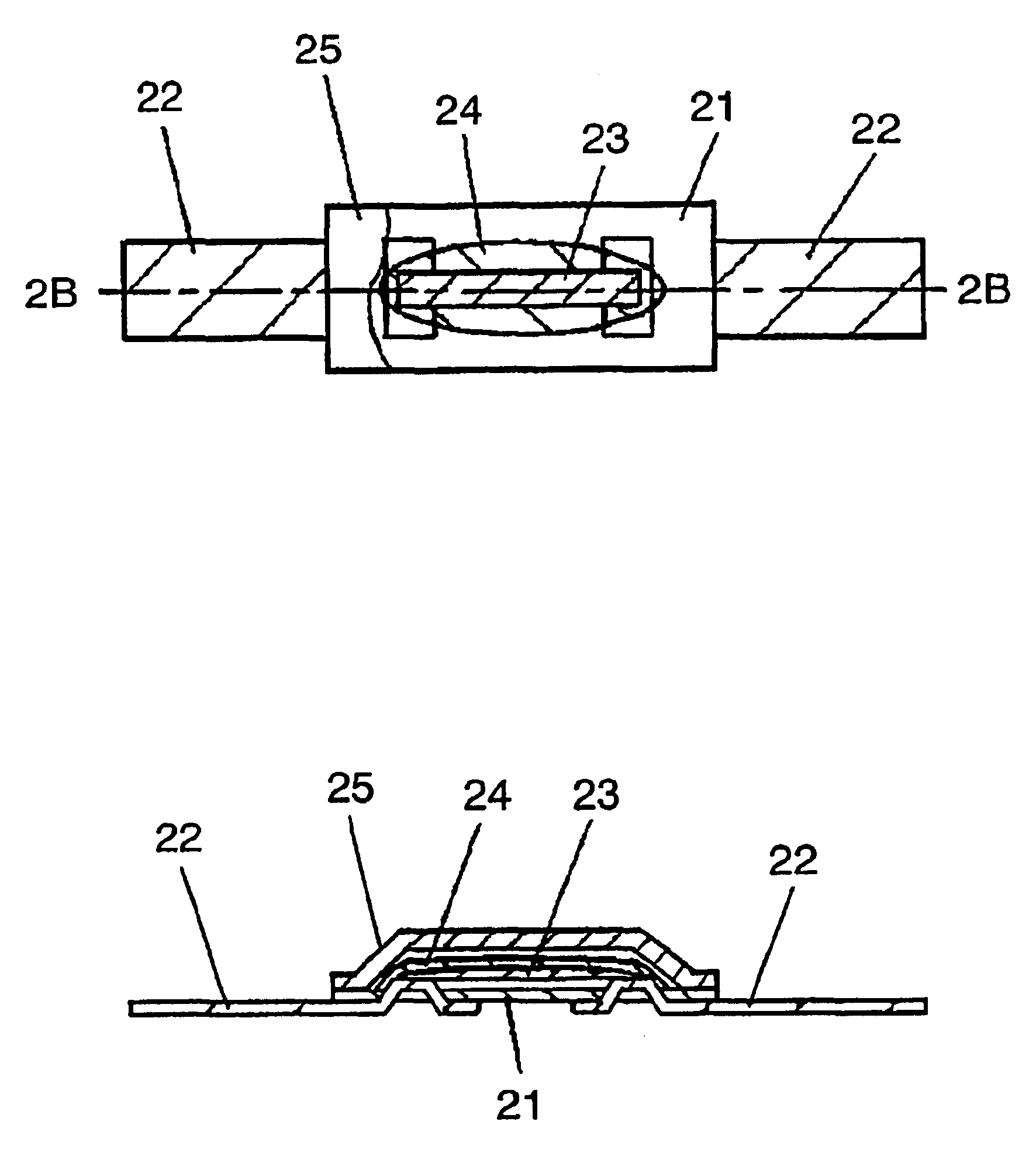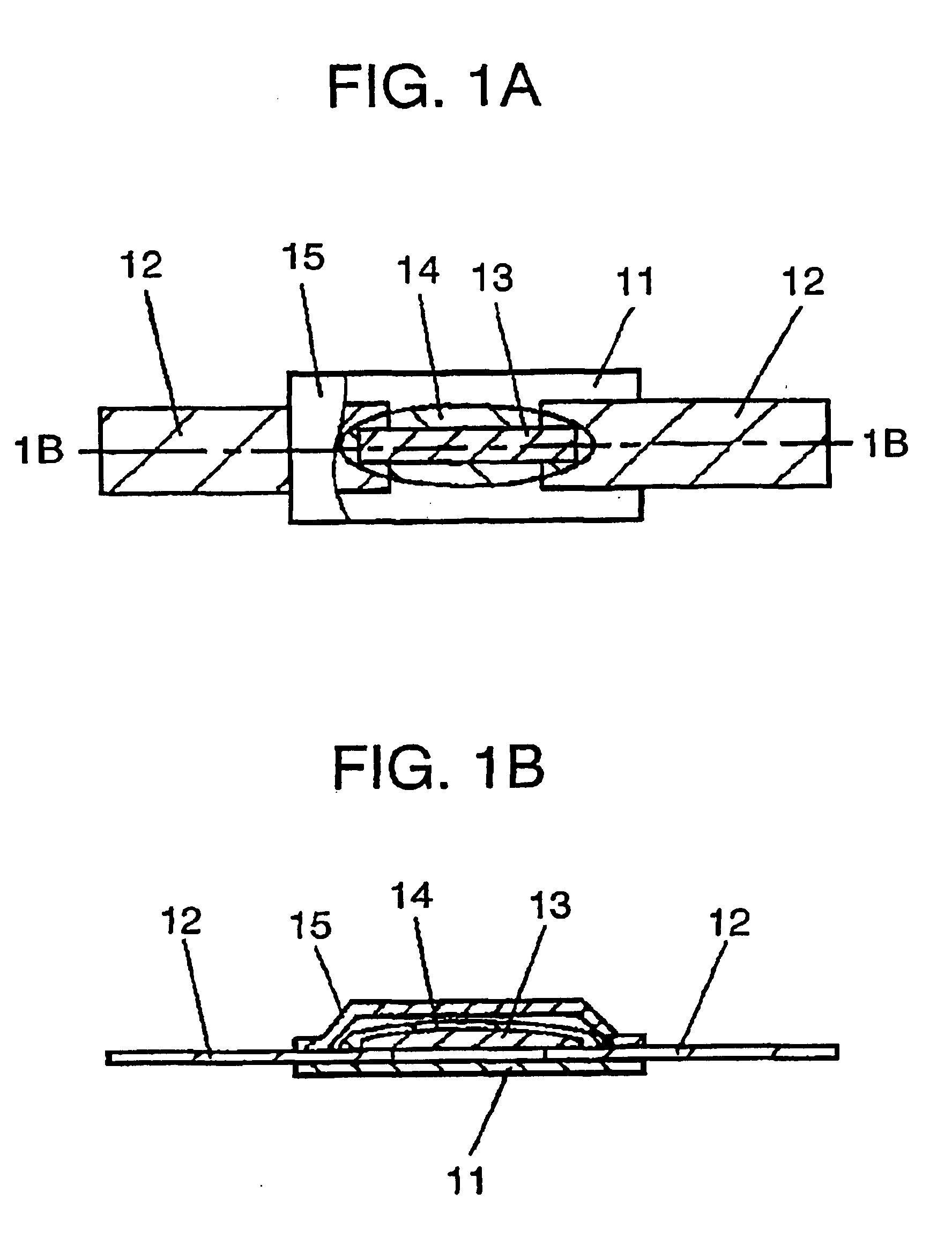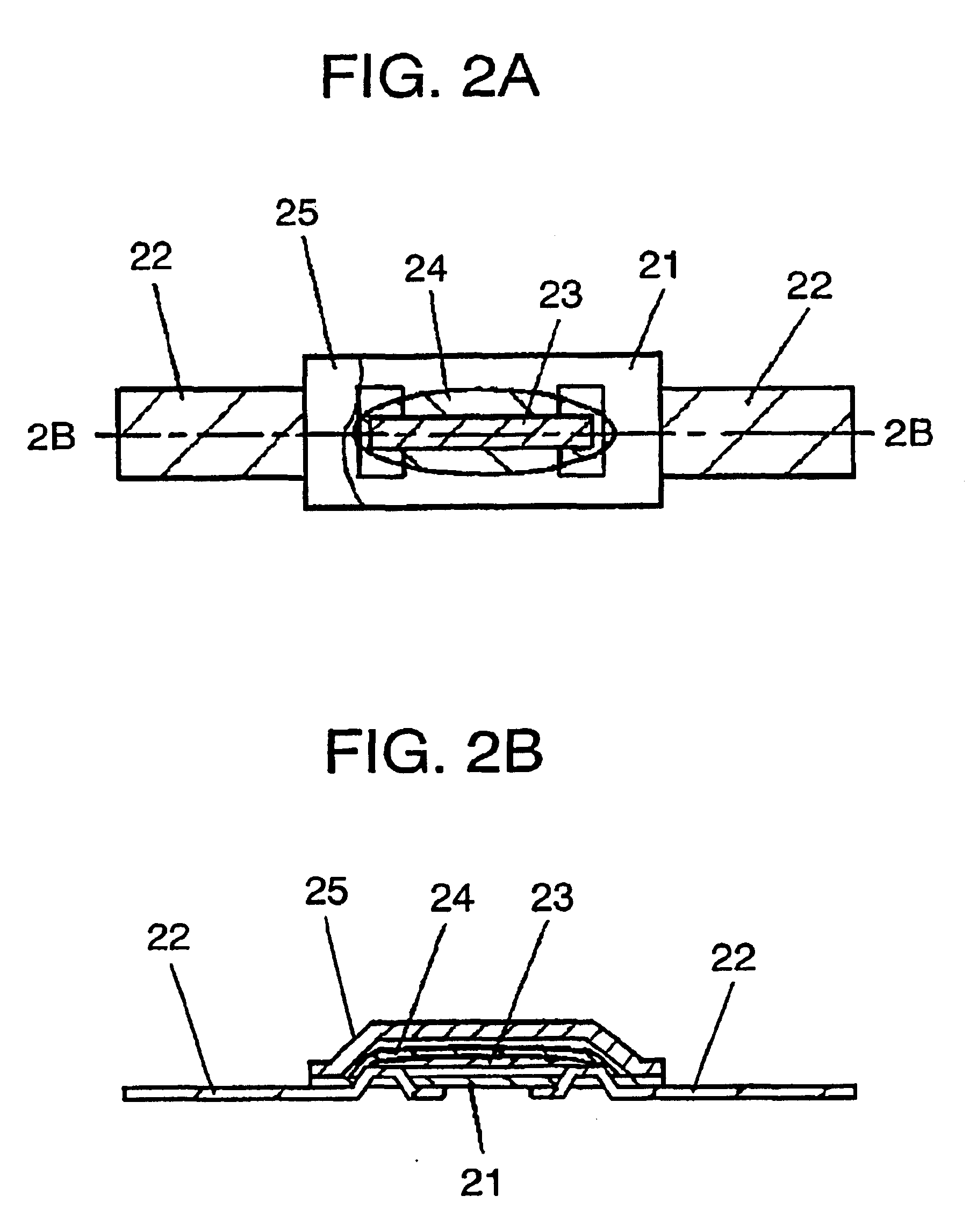Thermal fuse
a technology of thermal fuse and flux coating, which is applied in the manufacture of emergency protective devices, electrical equipment, basic electric elements, etc., can solve the problem that the image processing method using ccd cameras and the like cannot inspect the flux coating quantity of thermal fuse with high accuracy, and achieve the effect of accurate inspection
- Summary
- Abstract
- Description
- Claims
- Application Information
AI Technical Summary
Benefits of technology
Problems solved by technology
Method used
Image
Examples
exemplary embodiment 1
(Exemplary Embodiment 1)
FIG. 1A is a plan view, partly in section, showing a thermal fuse used in exemplary embodiment 1. FIG. 1B is a sectional view taken along the line 1B—1B in FIG. 1A.
A thermal fuse used in exemplary embodiment 1 comprises a sheet shaped first insulation film 11, composed of resin such as polyethylene terephthalate, polyethylene naphthalete or the like, coupled with a pair of metal terminals 12 having narrower width than first insulation film 11 as shown in FIGS. 1A and 1B. A pair of metal terminals 12, stripe shaped or line shaped, is composed of highly electrical conductive metal such as copper, nickel or the like whose surface is plated by solder, tin, copper or the like. Being placed above first insulation film 11, fusible alloy 13 is coupled between ends of metal terminals 12. Fusible alloy 13 consists of one of following metals: tin, lead, zinc, bismuth, indium, cadmium, silver and copper, or an alloy composed of a plurality of above mentioned metals.
Fusib...
exemplary embodiment 2
(Exemplary Embodiment 2)
The thermal fuse disclosed in exemplary embodiment 2 has a height of an internal space formed between first insulation film 11 and second insulation film 15 described in exemplary embodiment 1:not lower than 0.20 mm but lower than 0.35 mm and a color scale of flux 14 coated on fusible alloy 13:from 6 to 16.
As configured above, flux 14 has a limited range of color scale of from 6 to 16, narrower than first exemplary embodiment, corresponding to the lower height of an internal space formed between first insulation film 11 and second insulation film 15. Consequently, the image processing method can inspect thermal fuse on flux coating without any error due to judging as “transparent”, and can easily distinguish between flux 14 and fusible alloy 13, resulting a more accurate inspection on coating quantity of flux 14.
exemplary embodiment 3
(Exemplary Embodiment 3)
The thermal fuse disclosed in exemplary embodiment 3 has a height of an internal space formed between first insulation film 11 and second insulation film 15 described in exemplary embodiment 1:not lower than 0.35 mm but lower than 0.65 mm and a color scale of flux 14 coated on fusible alloy 13:from 5 to 15.
As configured above, flux 14 has a limited range of color scale, neither too large nor too small, corresponding to height of an internal space formed between first insulation film 11 and second insulation film 15.
Consequently, the image processing method can inspect thermal fuse on flux coating without any error due to judging as “transparent”, and can easily distinguish between flux 14 and fusible alloy 13, resulting a more accurate inspection on coating quantity of flux 14.
PUM
| Property | Measurement | Unit |
|---|---|---|
| height | aaaaa | aaaaa |
| height | aaaaa | aaaaa |
| height | aaaaa | aaaaa |
Abstract
Description
Claims
Application Information
 Login to View More
Login to View More - R&D
- Intellectual Property
- Life Sciences
- Materials
- Tech Scout
- Unparalleled Data Quality
- Higher Quality Content
- 60% Fewer Hallucinations
Browse by: Latest US Patents, China's latest patents, Technical Efficacy Thesaurus, Application Domain, Technology Topic, Popular Technical Reports.
© 2025 PatSnap. All rights reserved.Legal|Privacy policy|Modern Slavery Act Transparency Statement|Sitemap|About US| Contact US: help@patsnap.com



